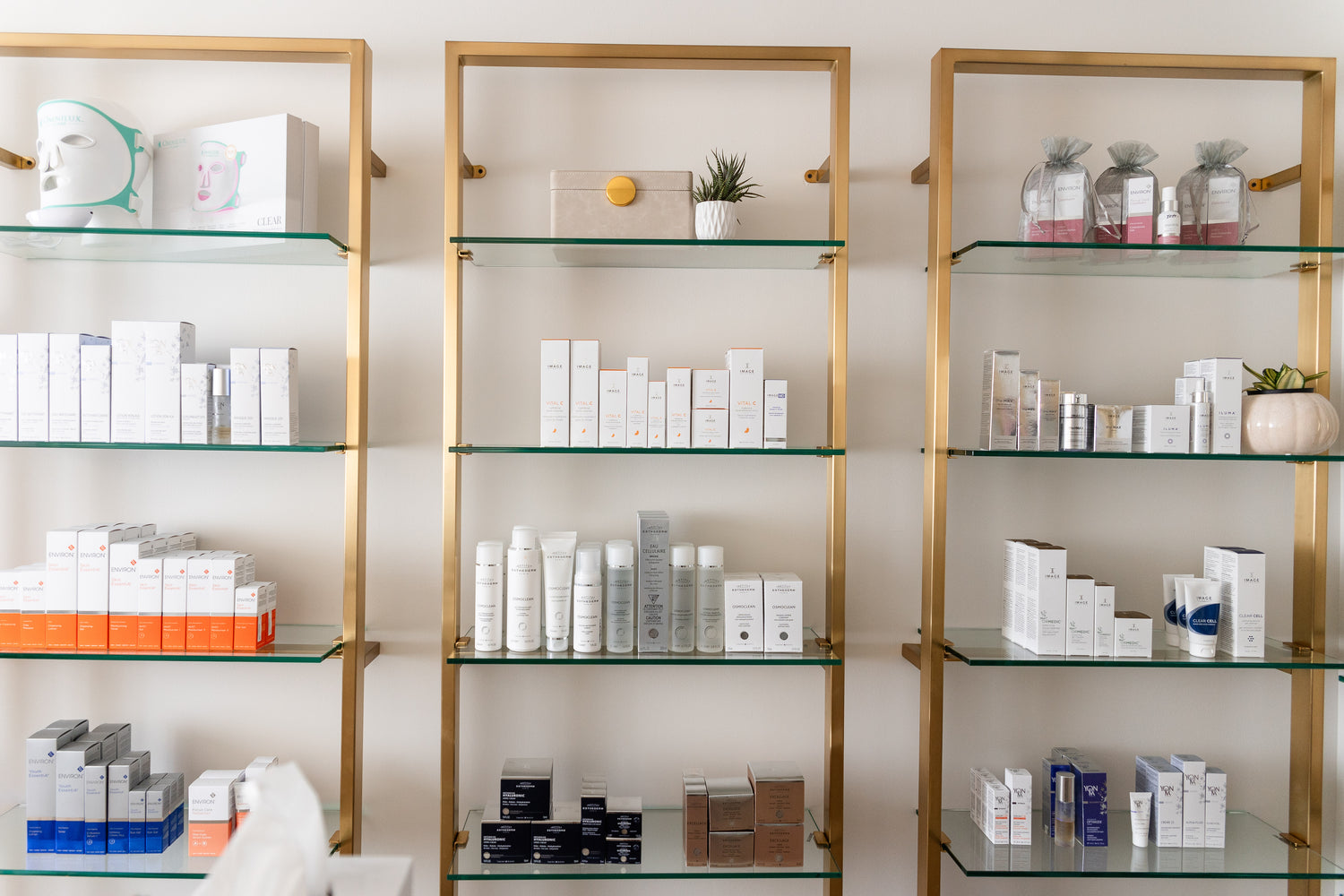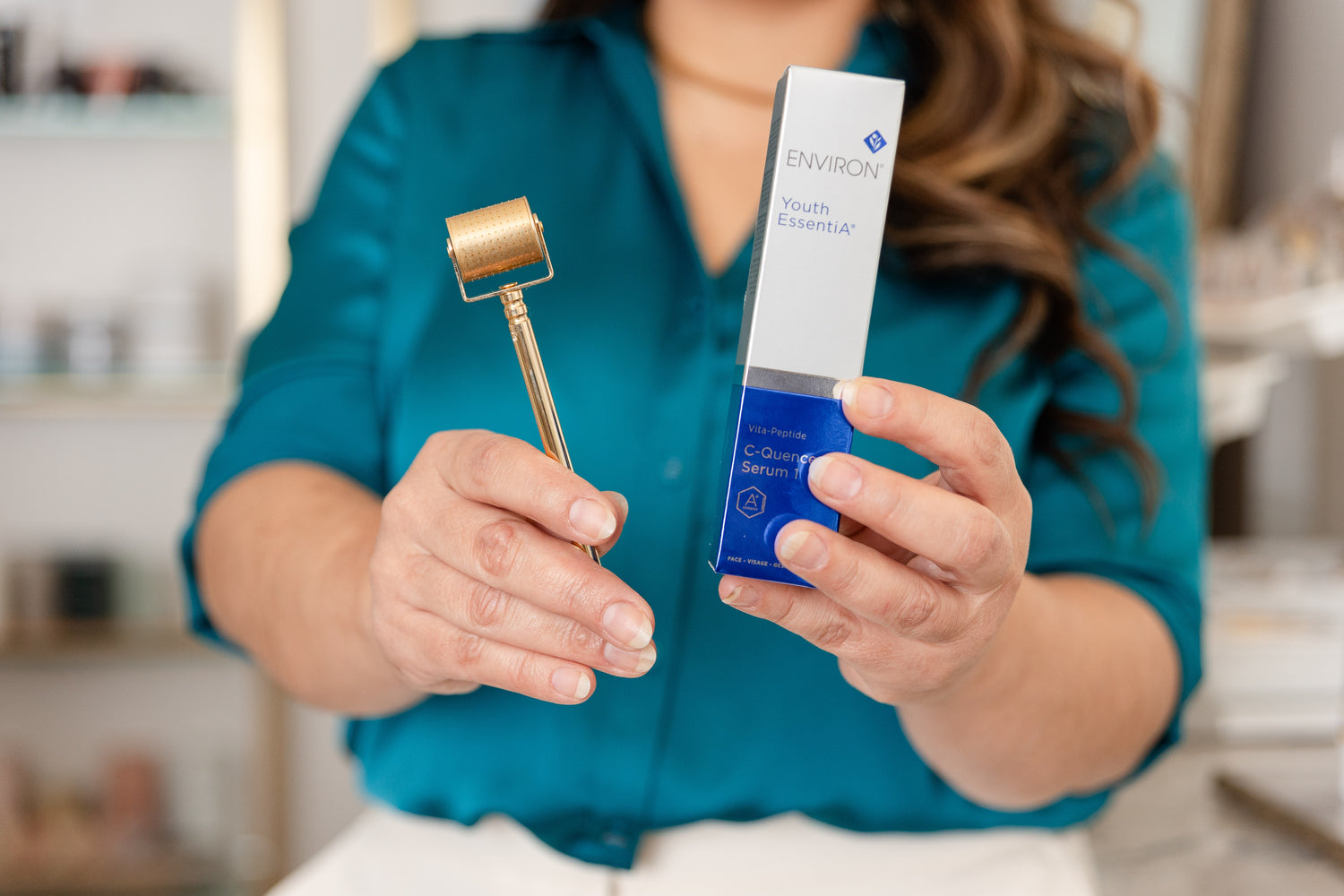There are a myriad of ways to expertly exfoliate your skin, but few ways are as effective as using glycolic acid. This true powerhouse ingredient goes well beyond merely exfoliating the skin. Let’s delve into glycolic acid…
WHAT Is Glycolic Acid?
Glycolic acid is an alpha hydroxy acid (AHA). It is colorless, odorless and is derived from sugarcane. It is the most commonly used AHA, is water soluble and has the smallest molecular structure. This means it can penetrate the skin more deeply, allowing for more effective results. Glycolic acid is also a humectant, meaning it has the chemical ability to draw moisture to itself. It is broadly used in the formulation of a wide range of skincare products – cleansers, toners, exfoliants, serums and moisturizers.
HOW Does Glycolic Acid Work?
Chemical Exfoliant - imagine the outermost surface of the skin (the epidermis) as a brick wall. As we age, the bonds (the mortar) that hold dead skin cells (the bricks) together become quite stubborn, slowing down the skin’s natural ability to renew itself. Glycolic acid loosens those bonds allowing for more easy elimination of dead skin cells on the surface of the skin and revealing newer, brighter, glowing skin in its place.
Humectant – because glycolic acid draws moisture to the newly revealed skin allowing it to stay hydrated and healthier.
Stimulant – because glycolic acid is so small, it can penetrate deep into the skin stimulating fibroblasts and thereby increasing the production of collagen.
WHO Should Use Glycolic Acid?
While combination, dry, normal and oily skin types are the most ideal candidates for glycolic acid, more sensitive skin types can still benefit from its use by regulating the concentration, formulation and frequency of use. For example, someone with sensitive skin may want to introduce glycolic acid via a cleanser (which will traditionally have a lower concentration than a peel or exfoliant). It may be beneficial to slowly ramp up to daily usage (until the skin has acclimated) or look for formulations that combine glycolic acid with other soothing ingredients to mitigate irritation.
WHEN Should Glycolic Acid Be Used?
It depends. When and how glycolic acid can be incorporated into a skincare regimen is dependent on several factors – namely skin type, skin condition to be treated (and how aggressively) and what product formulation is selected. A relatively normal skin type wanting to proactively address signs of aging, may be able to simply use a cleanser formulated with a low-to-moderate level of glycolic acid. An aging, sun damaged skin condition might want a more aggressive approach and opt for a professional glycolic acid peel (thereby delivering a higher concentration to target specific concerns).
Our Favorite Glycolic Acid Products!

IMAGE Skincare's AGELESS Collection - glycolic acid is the foundational ingredient in this collection. In some products, it is the star ingredient and in others it is combined with other powerful ingredients to mitigate irritation and/or accelerate results.

YONKA's Glyconight 10% Masque is the perfect way to gently introduce glycolic acid into a skincare routine for a sensitive skin type. This nighttime vegan peeling mask has a creamy, luxurious formulation that delivers a high concentration while buffered for skin comfort.

Jan Marini's Skincare Management System is another product collection that incorporates glycolic acid throughout its product formulation. Sold as a "system" because the products work synergistically to deliver visible and long lasting results.

Jan Marini's Multi-Acid Resurfacing Pads deliver professional in-spa treatment results at home. As the name indicates, this dynamic at-home peel combines four unique and powerful acids to instantly resurface the skin for a more refined texture and luminous glow.






